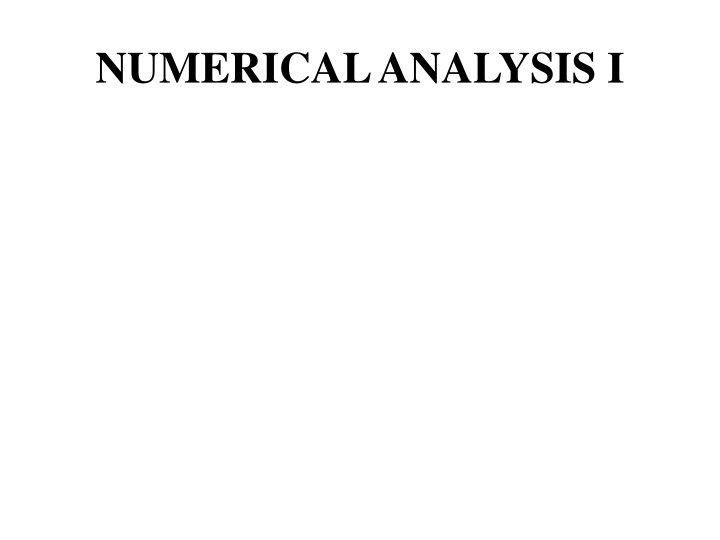
Numerical Analysis: Methods for Efficient Problem Solving
Dive into the world of numerical analysis to explore how mathematical problems are solved through arithmetic operations, approximation methods, handling errors, and more. Discover the importance of efficient techniques in obtaining accurate solutions.
Download Presentation

Please find below an Image/Link to download the presentation.
The content on the website is provided AS IS for your information and personal use only. It may not be sold, licensed, or shared on other websites without obtaining consent from the author. If you encounter any issues during the download, it is possible that the publisher has removed the file from their server.
You are allowed to download the files provided on this website for personal or commercial use, subject to the condition that they are used lawfully. All files are the property of their respective owners.
The content on the website is provided AS IS for your information and personal use only. It may not be sold, licensed, or shared on other websites without obtaining consent from the author.
E N D
Presentation Transcript
Numerical analysis is concerned with the process by which mathematical problems are solved by the operations of ordinary arithmetic.
evaluation of functions and integration etc. Although, quite a lot of these problems have exact solutions, the range of problems which can be solved exactly is very limited. Therefore, we require efficient methods of obtaining good approximation.
they usually provide only approximation solutions: a deliberate error may be made e.g. Truncation of a series, so that the problem can be reconstructed to get a stable solution.
Blunder called Human Error: This occurs when a different answer is written from what is obtained e.g. writing 0.7951 instead of 0.7591.
an infinite process is replaced by a finite one. For instance, consider a finite number of terms in any infinite series e.g.
(x + 1)- (1 + x)= 1 + x+ ( - 1) x2 + ( - 1) ( - 2) + 3x
If the formular is used to calculate f = e0.1we get
calculation will never stop. There are always more terms to add on. If we do stop after a finite number of terms, we will not get the exact answer.
decimal or binary representations are often rounded e.g. 1/3= 0.3333. If we multiply by 3 we have 0.9999 which is not exactly 1.
Round-off errors can be avoided by preventing cancellation of large terms.
error. Let true value and appropriate be x and x1respectively. The absolute error = | | = |x x1| and relative
Definition: A number x is said to be rounded to a d-decimal place number x(d)if error is given by | | = |x x(d)| 10-d
|| = |x x1| = 0.000042858 10-4= 0.00005
Let x, y be two numbers and let x1, y1 be their respective approximation with error and (eta)
Solution: x1 + y1 = (x ) + (y )
Compute the multiplication and division
